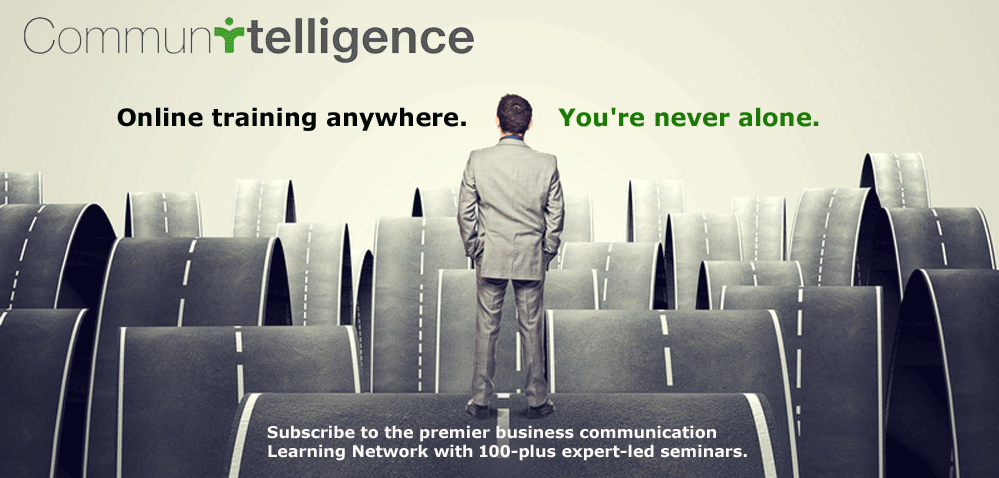My third “rule to write by” is The “It’s Not About You” Theory. People can spend more time considering what they want to say about their topic than what those they’re trying to reach want to know. This misplaced focus can make a communication dissuade rather than persuade the people who receive it.
You see it everywhere. There’s the memo written by someone who puts “I” in each sentence (just try to find a “you”—especially one that doesn’t involve what “you” should be doing for the “I”). There’s the LinkedIn page that drones on (for pages) about this person’s excellent qualities, until you scream, “This is too much—why can’t she just hit the high points!” There’s the PowerPoint presentation that spends the first 10 of a 20-minute presentation focused on the wonderful company in whose presence you’re now lucky enough to sit.
What do you do in these situations? I’ll confess—my choice usually is at least two of the three “D”s: dismiss it, dis it and dump it. Chances are good that none of these was the goal of the person creating the communication.
This is a pretty easy trap to fall into. Here are some tricks to help you sidestep those It’s Not About You Theory holes.
-
Trick #1: Know Your Target Audience. Is it a group of engineers that wants information in excruciating detail (and would consider a short communication a sign you hadn’t given something adequate thought)? Is it a CEO who just wants a one-page summary (and would be annoyed with a 10-page plan)? Is it a group of people with varying levels of attention span (so it would be wise to include the executive summary and the detailed memo)? What time of day will your audience likely see your communication (when they’re fresh in the morning or after a long day when they only want to go home)? How important will they consider what you’re sending (and if they think it’s unimportant, what can you do to move up your ideas on their food chain)?
In other words, be a method actor when it comes to communication—become your target audience. When you look at the communication from their perspective, you’ll automatically make it more meaningful to them.
-
Trick #2: Solve Their Problems. It’s Marketing 101: people run away from pain faster than they run toward features and benefits. When your ideas can put an end to something that’s been plaguing the people you’re trying to reach, you’ve just made it easier for them to say “yes.”
-
Trick #3: Use Language They Understand. Specifically, watch the jargon. If it’s an internal memo and everyone understands certain abbreviations, go ahead and use these without spelling them out (because detailing something everyone knows slows down and annoys readers). If it’s going to a group that might not understand jargon, then either spell it out or define it, or don’t use it (otherwise you risk making those who aren’t familiar with it feel stupid—so they’re less likely to give you what you want).
If you’re writing to a specific person, understand his learning style. There are three main ones:
1. Visual learners get most of their information through their eyes. Use words such as “see,” “visualize” and “look” to connect with them. (This is the largest group, so you usually can’t go wrong using this language in communications that go to a number of people.)
2. Auditory learners prefer to receive information through their ears. Use “hear,” “listen” and “sounds like” for them—or just speak with with them.
3. Kinesthetic learners get information primarily through touch—those folks who like to take things apart or put them together, for example. Use “feel,” “taste” and other tactile words with these people.
Don’t be afraid to use a person’s favorite phrases, too, as long as these aren’t clichés or sound fine when spoken but look foolish in writing. (I had a college biology professor who incessantly said “in terms of, ” so used to drop one or two of these into my essays—because she liked them. I’m still sure that doing this helped my GPA in a subject where I wasn’t too hot!)
Now it is about you! Please comment on what you do to connect with your target audiences—or avoid turning them off.
Lynn Franklin says she started Lynne Franklin Wordsmith 16 years ago because …”I was in danger of being made a partner at the world’s largest investor relations agency. Or because a tarot card reader told me to. Or because I wanted to prove my theory that wearing pantyhose didn’t make me more productive. All of those would be true.”











